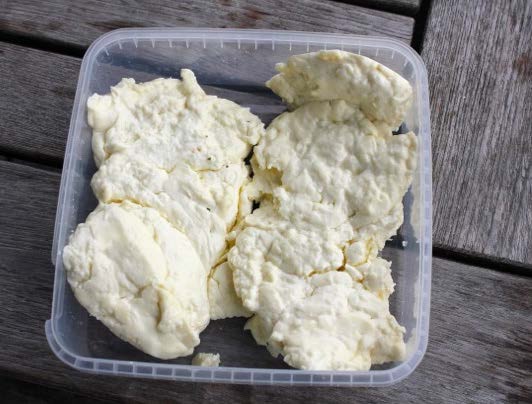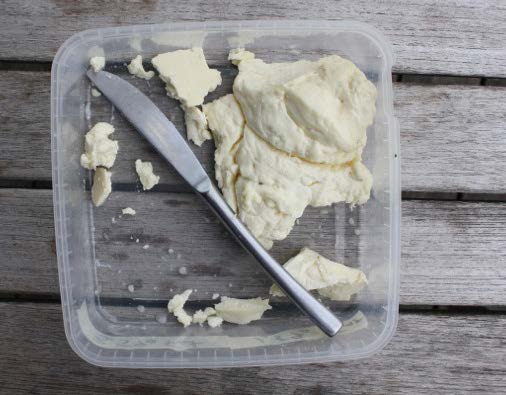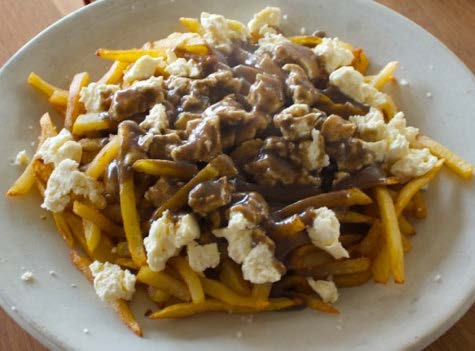posted by Justine de Valicourt
The Quebecois love their squeaky cheese. All those French speakers in eastern Canada know these very fresh cheese curds that whine surprisingly under the teeth. The worst part? Translated directly, these delicacies are called “cheese shit”, from the Quebecois “crottes de fromage”, because of their appealing shape.
They are also the key ingredient in a typical fast-food dish that is strongly attached to Quebecois culture: poutine. As a Quebecois, I was asked to prepare this legendary meal for my colleagues. Most of the time, this high-caloric meal is composed of french fries (deep-fried in old oil), squeaky fresh cheese curd and gravy (from powder). At the lab, however, we like to begin from scratch – so the potatoes were cut, parboiled, and deep-fried in fats we clarified from different meats, the gravy was from a delicious duck stock and leftover mushrooms, and the cheese, clearly, was homemade.
But how to get that all-important squeak? I made two versions of the cheese, one from 1.5% fat milk, the other from whole milk (3.5% fat). The latter was preferable for its more enrobing taste (as you can see).
Squeaky cheese curds
Inoculate 3 L of milk with 200 mL of buttermilk or yogurt or any other cultured milk product and incubate for 90 minutes at 32 °C.
At this point, some people add calcium chloride; I didn’t and my curds were fine.
Add a mixture of 200 mL of water with 5 mL liquid rennet into the cultured milk. Stir slowly for 30 seconds and let the curds form
for about an hour.
Cut the curds into about 2 cm cubes (I haven’t been able to cut super well horizontally, my curds were probably more like 2 cm X 2 cm X 4 cm). Let these curds set for a couple of minutes, still at 32 °C.
When the curds are more set, bring the milk up very slowly to 39 °C (I went up to 45 °C and my curds were ok, but maybe less squeaky than they would have been). Keep at this temperature for one more hour.
From that point I stopped following the recipe I had (though I’m not sure I followed it from the beginning anyway…).
The curds should be drained from the whey at this point and kept at ~37 °C for a couple of hours. It is best to take them out from the whey and put them in a colander above the warm whey, so it keeps the curds warm while they drain. Some recipes knit the curds together by pressing them, but in Quebec, we prefer the weird unattached shapes (again, hence the name).
After 30 minutes, I added salt and mixed the curds, but kept them on top of the whey, with a lid. I left them there, at room temperature, overnight.
The next morning my curds were ready and squeaky. I had to break them apart to use them on the fries.
We had the poutine for lunch, along with a very large salad.
This version of poutine was probably one of the best I’ve had, but if I may suggest, it is always better drunk at 3 in the morning, or after a very long day skiing…



